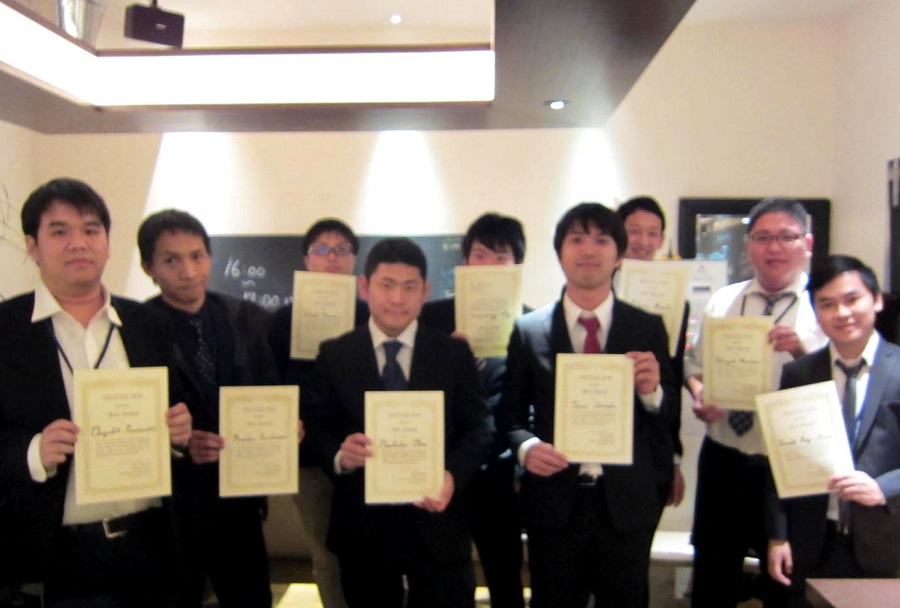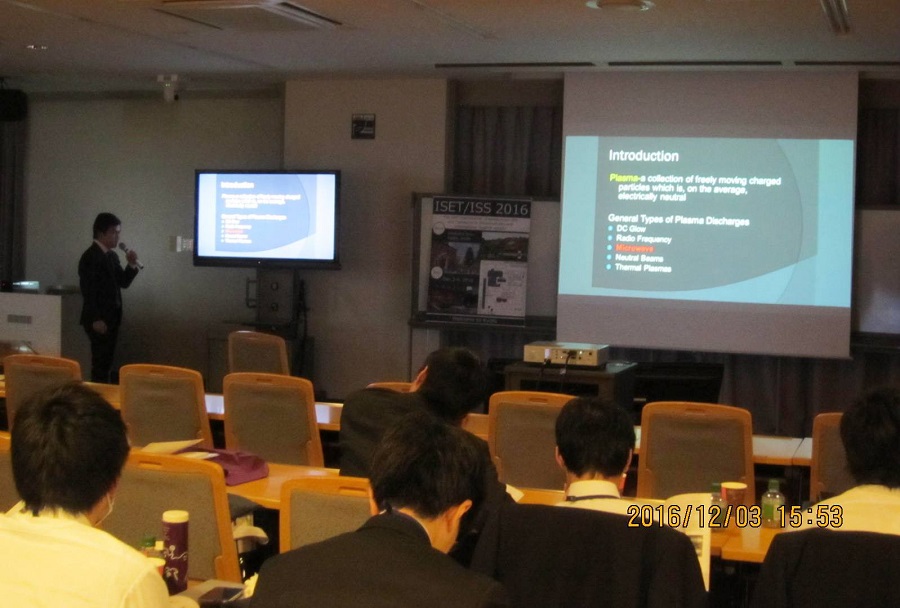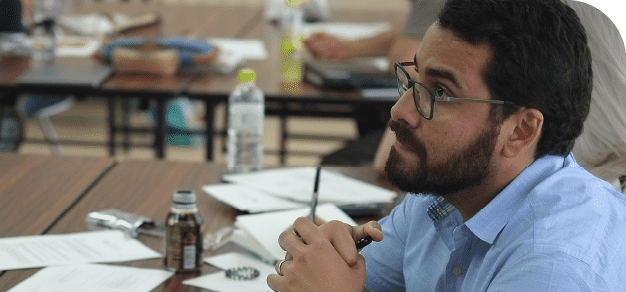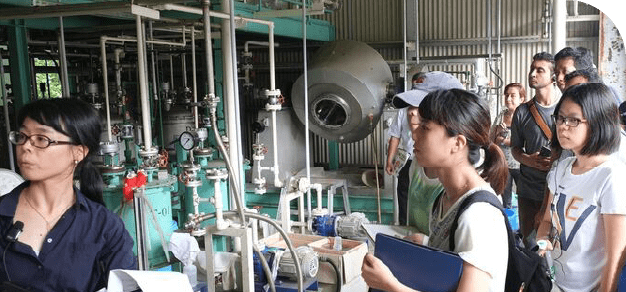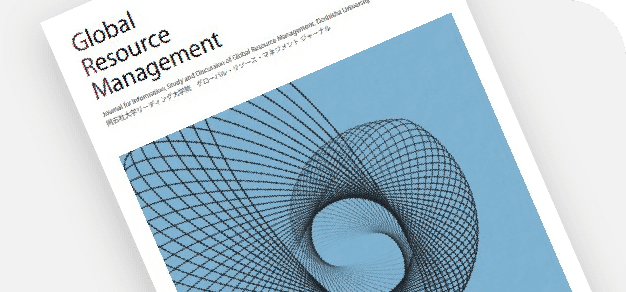GRM Students’ Reports
ISET/ISS 2016 in Kyoto
Graduate School of Science and Engineering Arnold Rey Burgos Gines
2016/12/20
The 10th International Symposium on EMC and Transients (ISET) in Infrastructures
and International Student Session (ISS)
Date: December 3, 2016, Kyoto, Japan
Venue: Neiseikan Meeting Room, Imadegawa Campus, Doshisha University
The ISET/ISS 2016 was organized by students and faculty from Doshisha University, Japan. The ISET and ISS sessions were held in Doshisha University, Imadegawa Campus on December 3, 2016.
The ISET session was chaired by Professor Naoto Nagaoka. The speakers or this session were professors coming from Japan and Thailand. The presentations range from current researches being conducted in the electrical and electronic engineering fields as well as the status of the electrical / electronic engineering degree in Thailand.
The International Student’s Session (ISS) was divided into three sessions. One session was held in the morning and the next two sessions in the afternoon. There were 31 presentations divided among the three sessions. The presentations range from renewable energy generators, indoor lighting designs, devices and systems, energy storage devices and batteries, field calculations in power systems, technical problems and system performances in infrastructures and illuminance. Most of the presentations are part of the current studies of the students in their respective graduate courses. All presentations were reported in English. A short discussion / clarification on the topic was conducted after each presentation.
My presentation was scheduled on the last session, I presented a paper entitled “Design and Initial Operation of a 2.45 GHz Microwave-induced Sheet Plasma Source”. The presentation revolved around the design of the device and the initial power and pressure requirements to ignite a plasma.
The first day of the conference was capped with a banquet prepared by the local organizers. Here, the participants were given more time to interact and socialize with each other. During the event, nice awards were given to students who made good impressions in their presentations. My presentation was one of those awarded.
Overall, the conference provided us with a broader understanding of current studies in the field of electronic / electrical engineering.
On the second day, the conference activities continued and ended with a tour at the Kyoto Railway Museum. The technical tour consisted of a brief history of the railway system and trains in Japan.
Different parts and designs of various trains and railway systems were on display – each patiently explained by the tour guides. At the end of the tour, the participants gained a broader insight into the evolution of the railway systems in Japan and their operation.
For details, please visit our Home Page.
